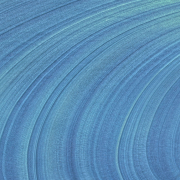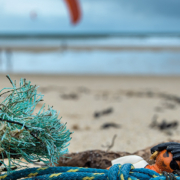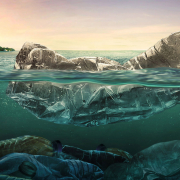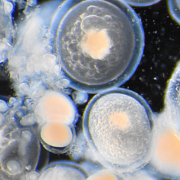Compound-specific recording of gadolinium pollution in coastal waters by great scallops
Gadolinium-based contrast agents (GBCAs), routinely used in magnetic resonance imaging (MRI), end up directly in coastal seawaters where gadolinium concentrations are now increasing. Because many aquatic species could be sensitive to this new pollution, we have evaluated the possibility of using shellfish to assess its importance. Gadolinium excesses recorded by scallop shells collected in Bay of Brest (Brittany, France) for more than 30 years do not reflect the overall consumption in GBCAs, but are largely controlled by one of them, the gadopentetate dimeglumine. Although its use has been greatly reduced in Europe over the last ten years, gadolinium excesses are still measured in shells. Thus, some gadolinium derived from other GBCAs is bioavailable and could have an impact on marine wildlife.
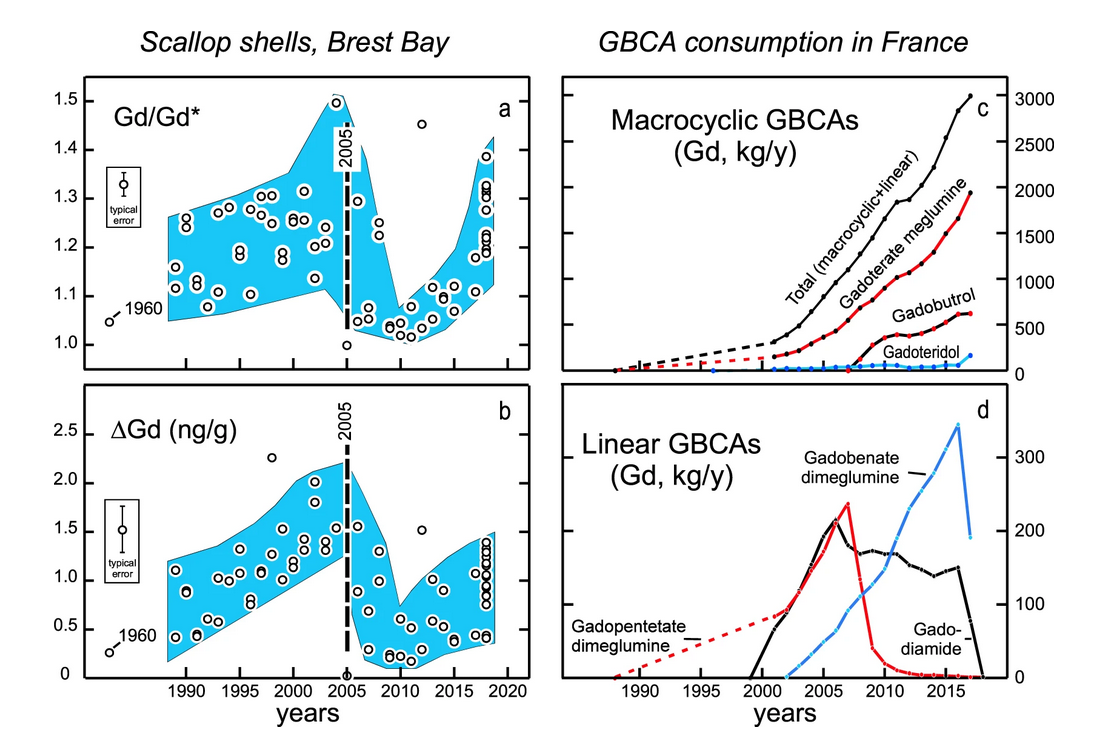
Fig. 3b : Gadolinium anomalies (a: Gd/Gd*), gadolinium excesses (b: ΔGd) recorded by scallop shells sampled from 1960 to 2018 in Bay of Brest, and GBCA consumption in France recorded in the Medic’AM database22 maintained by the CPAM (French Health Insurance agency) (c: total consumption and macrocyclic GBCAs, d: linear GBCAs).
These excesses in scallop shells (ΔGd = 0–2.3 ng/g) display a complex temporal evolution (Fig. 3b). The oldest sample collected in 1960, before the use of GBCAs, does not show any significant excess in gadolinium. A marked increase in gadolinium excesses is seen from 1989 to 2005, followed by a sharp decline until 2010 when normal levels are observed again. Afterwards, the excesses seem to increase again without reaching the 2005 maximum, but the data show some spread. Such an evolution is unexpected because the use of GBCAs has always been increasing since their introduction on the market. It could depend on the bioavailability of anthropogenic gadolinium as determined by its speciation in seawater.
Reference
Le Goff, S., Barrat, J.-A., Chauvaud, L., Paulet, Y.-M., Gueguen, B., & Salem, D. B. (2019). Compound-specific recording of gadolinium pollution in coastal waters by great scallops. Scientific Reports, 9(1), 8015. https://doi.org/10.1038/s41598-019-44539-y

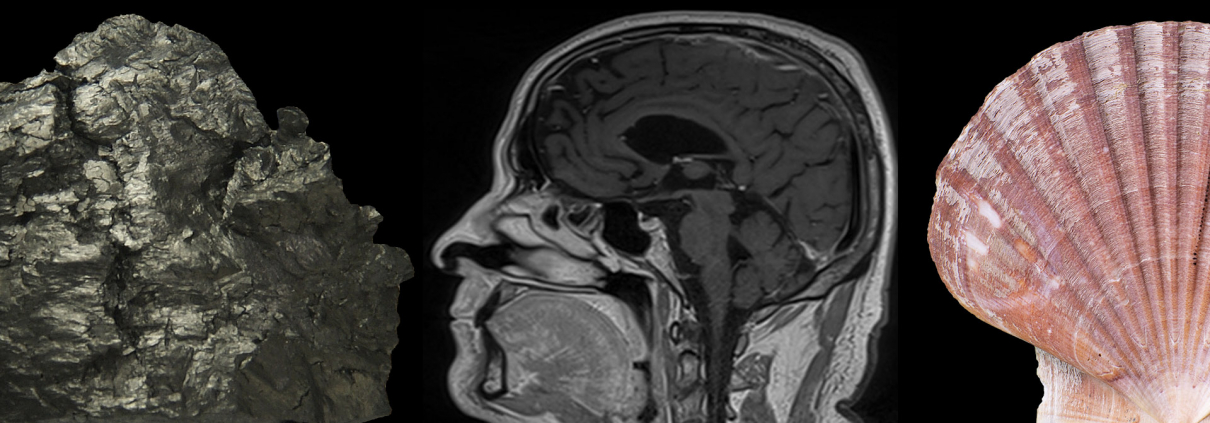
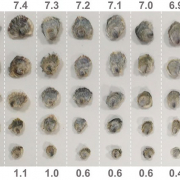
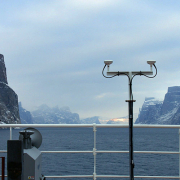 Jean- Pierre Aubé
Jean- Pierre Aubé 